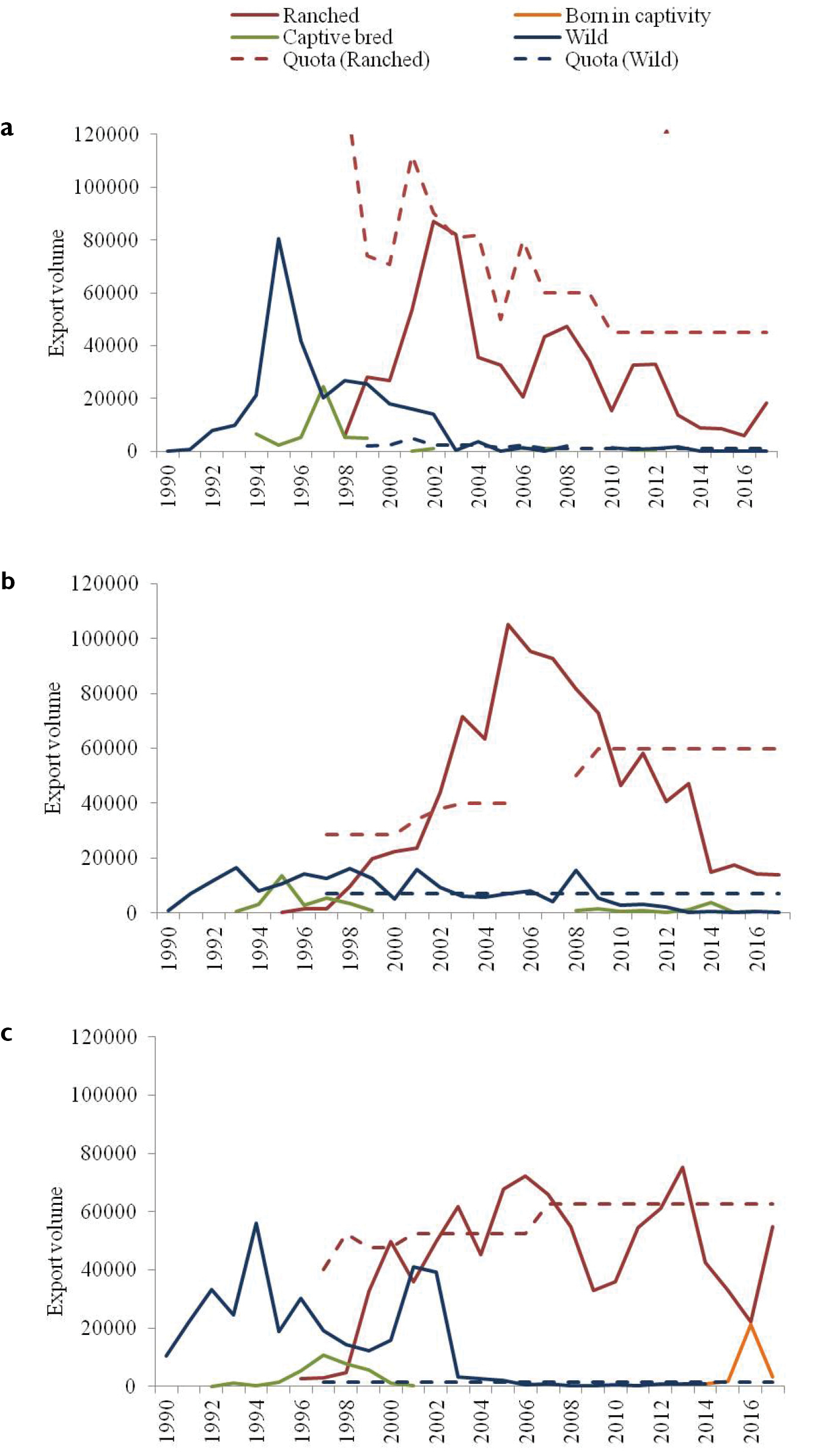
|
||
|
Source of annual exports (export volume, number of individuals) documented by Benin (a), Ghana (b) and Togo (c), based on importer-reported quantities in the period 1990–2017 (source codes were not recorded prior to 1990), together with export quotas (dashed lines) for ranched and wild specimens as communicated to CITES. Source codes defined as follows (Lyons et al. 2017): “Ranched” (R) = Specimens of animals reared in a controlled environment, taken as eggs or juveniles from the wild, where they would otherwise have had a very low probability of surviving to adulthood; “Bred in captivity” (C) = Animals bred in captivity in accordance with Resolution Conf. 10.16 (Rev.) (i.e. where parents mated in a controlled environment and where the breeding stock was established in a manner not detrimental to the survival of the species in the wild, and maintained [under normal circumstances] without the introduction of specimens from the wild); “Born in captivity” (F) = Animals born in captivity (F1 or subsequent generations) that do not fulfil the definition of “Bred in captivity” in Resolution Conf. 10.16 (Rev.) (e.g., parents did not mate in captivity, or the breeding stock/operations did not meet CITES requirements); Wild (W) = Specimens taken from the wild. Further detailed graphs in Suppl. material 1. Source: CITES Trade Database (http://trade.cites.org/) and UNEP (2019). |